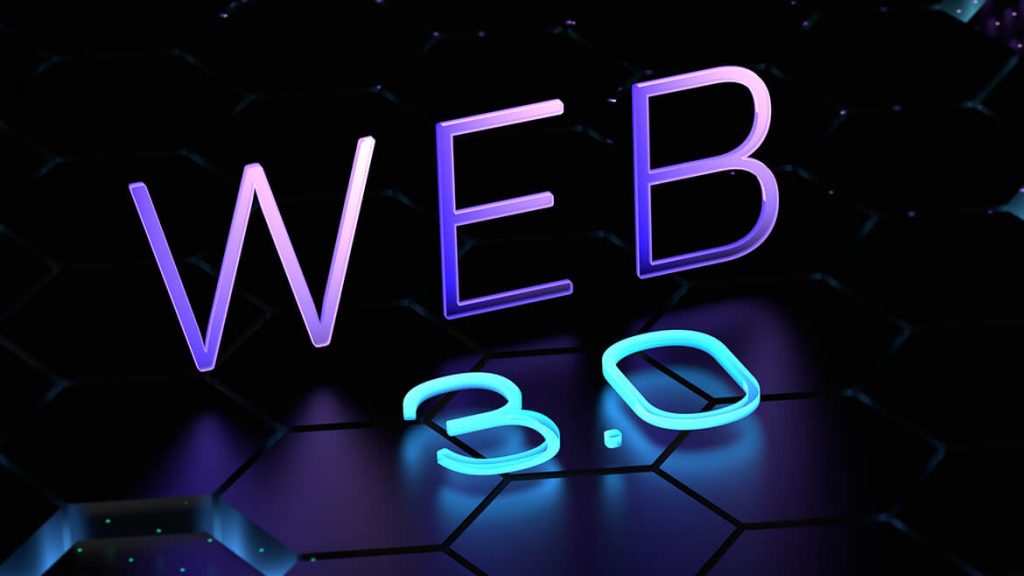Web 3.0is the most recent or emerging phase of the internet’s evolution. Web 3 or Web 3.0 is based on the idea of establishing a completely decentralized ecosystem. This new technological dimension believes in harnessing the power of A.I., machine learning, and cutting-edge technologies such as blockchain to solve problems in today’s internet/online ecosystem.
What distinguishes Web 3.0 from previous versions of the web?
Web 1.0, or the first version of the internet, was only a basic read-only version. It did not provide users with much functionality or flexibility. Users were only permitted to read information from websites. The second generation of the internet, or Web 2.0, i.e. the stage of the internet at which we are now, provided a little more flexibility. Web 2.0 enabled users to not only read but also write, upload, send, and receive various types of content – text, image, and video – via the internet.
As a result, Web 3.0 is bound to be much better and more advanced than the internet we are used to today. In other words, Web 3.0 refers to a new, improved, and democratized internet ecosystem free of centralized control. Web 3.0 can change the way we use the internet by utilizing blockchain technology. It has the potential to take the internet to a whole new level.
People will be able to buy, own, sell, and earn money by selling their digital content via NFTs. Once Web 3.0 is widely adopted, various applications of blockchain technology, such as smart contracts and decentralized apps (DApps), will gain popularity.
What are the main features of Web 3.0?
The fundamental idea behind Web 3.0 is to make the internet a smarter place. This new web era will make the internet more responsive, intelligent, and capable of providing a more satisfying and tailored user experience. It will completely change the way we know and use the internet today. To understand the potential changes that may occur in Web 3.0, we must first understand the four main pillars/features of Web 3.0:
Artificial Intelligence
Artificial intelligence is a key feature of Web 3.0, with the ability to decipher human emotions and thoughts. Artificial intelligence (AI) will be widely used to filter data and content and tailor search results to the user’s preferences.
Semantic Web
Semantics is the study of word relationships. The semantic web would allow computers to analyze data and decode the meaning and emotions being conveyed. It will aid in providing users with a more enjoyable internet experience.
Ubiquity
Ubiquity refers to the ability to be present everywhere at the same time, or, in simpler terms, omnipresence. Web 2.0, or the internet as we know it today, is now almost everywhere. As a result, Web 3.0 will simply take it a step further by making the internet more widely available through the Internet of Things (IoT).
3D Graphics
Web 3.0 will introduce new graphics technology, allowing for the creation of a three-dimensional virtual world. The use of 3D graphics will enhance the internet user experience while also assisting in the transformation of a variety of sectors such as health, e-commerce, real estate, and so on.
How can blockchain technology be useful in Web 3.0?
In terms of improving the internet and increasing its efficiency, Web 3.0 powered by blockchain technology can be extremely beneficial in a variety of ways. Using blockchain technology, transaction speeds can be increased to astounding levels. From 7 transactions per second (TPS) with Bitcoin in its early days to 50000 TPS with Solana today, blockchain technology has the potential to change the course of the internet’s future and how we use it.
Blockchain technology, when used correctly, has the potential to improve not only the digital transaction sector, but also the digital health care sector, the supply chain sector, and many other important market sectors. Blockchain technology has the potential to change the way we perceive social media sites.
Despite all of the big promises made by Web 3.0 and blockchain technology, the implementation and adoption of these technologies in real-world scenarios will take much longer than we can expect. Blockchain technology, like any other technology, has some disadvantages. Thus, implementing blockchain technology in the mainstream will be difficult until and unless the associated issues are resolved. Only time will tell how Web 3.0 will be adopted in the mainstream and what changes it will bring to the way we live.
Conclusion
Web 3.0 is the internet’s future. It will include numerous features with which users can interact. Browsing will become more reliable and user-friendly as it evolves. The rise of new social platforms, search engines, and marketplaces built and owned by the collective, rather than corporations, will be aided by blockchain technology and artificial intelligence. Users can also build their platforms, profit from them, and reclaim their data.


